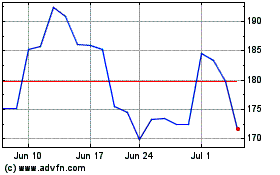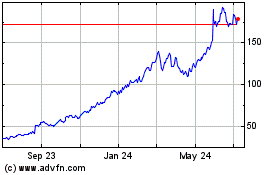This month’s employment report was solid, not great, but much
better than expected, particularly when the revisions to previous
months are considered. When the revisions are added to the
September numbers, we were up 202,000 in total and 217,000 on the
private sector side, according to the establishment survey.
Not all demographic groups were hit equally hard in the downturn,
and they have not fared equally in the very slow climb out of the
downturn. In this post I focus on the demographics of
joblessness.
Demographics of Joblessness
This recession has hit men harder than it has hit women.
However, over the past year, things seem to be “evening out”
between the genders, and this month that evening out continued. In
September, the unemployment rate for adult men (over 20) fell to
8.8% from 8.9% in August. It is down from 9.7% a year ago.
The year-over-year decline is partly an illusion though as the
participation rate for men fell from 74.2% a year ago to 73.4% in
September, but rose from 73.3% in August. Thus the monthly drop in
the unemployment rate for men was actually bigger than it appears.
The employment rate for men rose to 66.9% from 66.8% in August, but
is unchanged from a year ago.
For women, the unemployment rate rose from 8.0% in August to 8.1%
in September, and also from 8.0% a year ago. The participation rate
was 59.8%, up from 59.7% August, but down from 60.3% last year. The
employment rate rose to 55.0% from 54.9% last month, but is below
the 55.5% rate a year ago.
Thus, on a month-to-month basis, the employment situation actually
got a little bit better for women, not worse as just looking a t
the unemployment rate would indicate. On the other hand,
relative to a year ago there has been much more deterioration than
the slight tick up in the unemployment rate would indicate.
Employed Teenagers
Teens, regardless of gender have had a very hard time of it in this
recession. Just go to a
McDonald's (MCD) and you
will see this for yourself. Normally the blemishes you see on the
cashiers face is acne, not liver spots, as is the case now.
Things got a little bit better for teens in September. The teen
unemployment rate fell to 24.6% from 25.4% in August, and is down
from 26.0% a year ago. The improvement is real, but the levels are
still horrific. The participation rate was unchanged at 34.5% and
up from 34.2% a year ago.
The percentage of teens that actually have a job rose to 26.0% in
September from 25.7% in August, and up from 25.3% a year ago. Don’t
be too hard on your kid if he tells you he can’t find a job -- he
probably isn’t lying.
While for the most part the earnings from teen jobs tend to go
towards clothes from
Abercrombie & Fitch (ANF)
and other teen clothing stores, for many it is a significant part
of paying for college. Also, when teens work, they learn important
job skills, such as the importance of actually showing up, and
doing so on time. The extremely low levels of teens working is not
a good sign for the future.
In the Great Depression, we had the Civilian Conservation Corps
(CCC) that put unemployed kids and young adults back to work.
Perhaps it would be a good idea to do so in the current Lesser
Depression. That, however, would entail the federal government
actually spending some money to help fix the problem.
Ideology would trump effectiveness at creating jobs for teens. If
the total cost were $10 per hour (minimum wage plus overhead costs)
it would cost $10.4 billion to put 1 million teens to work part
time (20 hours per week) for a year. In addition to the value of
whatever work they did (cleaning parks, tutoring younger kids,
helping take care of seniors, etc.) it would also teach them very
important long-term job skills, and would be a very good investment
in the future.
The graph below tracks the overall unemployment rate for men and
women, as well as the unemployment rates for teens of each
gender.
 By Racial Type
By Racial Type
Not surprisingly, Whites have a lower unemployment rates that do
Blacks or Hispanics. The White unemployment rate was unchanged at
8.0% for the month and is is down from 8.7% a year ago. The
participation rate was unchanged at 64.5% for the month, but down
from 65.1% a year ago. The employment rate for Whites was also
unchanged on the month, at 59.3% but is down from the year ago
level of 59.5%.
Thus it is a fair conclusion that the jobs picture for Whites was
unchanged for the month, but the year over year improvement is
partly an illusion. The fall in the participation rate, greatly
exaggerated the real improvement in the employment picture.
The unemployment rate for Blacks dropped to 16.0% from 16.7% last
month, and it is below the 16.1% a year-ago level. The true picture
though is actually better than that, at least as with regard to
direction. The level is horrible.
For the month, the participation rate for Blacks rose to 62.0% from
61.5% last month and up from 61.7% a year ago. The monthly
improvement is even better than it looks based on the unemployment
rate alone, especially for the month-to-month numbers, but to a
lesser extent the year-over-year improvement as well. The
employment rate for Blacks rose to 52.1% from 51.2% in August, and
is up from 51.8% a year ago.
The unemployment rate is 100% higher than that for Whites, and the
employment rate is 12.1% lower (52.1% vs. 59.3%). The participation
rate is just 3.9% lower. A year ago, the participation rate was
5.2% lower and the employment rate was 12.9% lower. A year ago, the
unemployment rate for Blacks was 85.1% higher than the White
unemployment rate.
The unemployment rate for African American teens looks more like
the unemployment rates you associate with Africa, but has improved
significantly over the last year. It fell to 44.2% from 46.5% in
July, and down from 49.2% a year ago. That is in the face of a rise
in the participation rate this month to 25.8% from 24.2% in August,
and up from just 23.1% a year ago.
In September, just 14.4% of Black teens had a job, but that is up
from 13.0% in August and only 11.7% a year ago. While the
improvement is encouraging, the levels are still beyond awful.
For Hispanics, the unemployment rate was unchanged for the month at
11.3% and down from 12.5% last year. The true picture is slightly
better than that on a month-to-month basis, but relative to a year
ago, it is much more downbeat than the big drop in the unemployment
rate would suggest. The participation rate rose to 66.4% from 66.3%
last month but down from 67.5% a year ago.
The employment rate rose to 58.9% from 58.8% last month. A year ago
the Hispanic employment rate was 59.1%. Thus, the improvement in
the job picture from last year one would see if you only looked at
the unemployment rate, is a mirage. On the other hand, there was
actually a month-to-month improvement, rather than no change.
The participation rate by Hispanics is actually 2.9% higher than
for Whites, but a year ago it was 3.3% higher than for Whites. The
employment rate is 0.6% lower, while a year ago it was 0.7% lower
than for Whites. Over the last year the unemployment rate has moved
from being 43.7% higher than the White unemployment rate to 41.3%
today.
The graph below shows the unemployment rates for the three biggest
racial groups over the last 30 years. Note that while the
unemployment rate for Blacks is always higher than that for
Hispanics, which is in turn higher than for that of Whites, that
the more disadvantaged groups tend to be hit harder when the
economy turns down than are Whites.
The numbers in the graph are not seasonally adjusted, while the
rest of the numbers I have been discussing are seasonally adjusted.
The FRED database did not have all the numbers on a seasonally
adjusted basis.

ABERCROMBIE (ANF): Free Stock Analysis Report
MCDONALDS CORP (MCD): Free Stock Analysis Report
Zacks Investment Research
Abercrombie and Fitch (NYSE:ANF)
Historical Stock Chart
From Jul 2024 to Aug 2024

Abercrombie and Fitch (NYSE:ANF)
Historical Stock Chart
From Aug 2023 to Aug 2024
